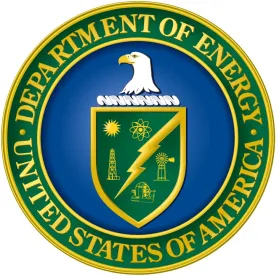On September 22, 2022 the Biden-Harris administration announced a historic $7 billion funding opportunity to create regional clean hydrogen hubs (“H2Hubs”). One of the largest-ever public investments in clean hydrogen and in the history of the Department of Energy (DOE), the H2Hubs will form a critical component of America’s future clean energy economy, supporting the Biden administration’s goal to achieve a carbon-free electric grid by 2035 and a net zero emissions economy by 2050.[1]
Hydrogen is a versatile source of energy that can be used to reduce emissions from carbon-intensive industries such as steel, chemicals, and transportation. The development of H2Hubs will enable networks of clean hydrogen producers, consumers, and connective infrastructure to accelerate the use of hydrogen as a clean energy carrier.[2]
The DOE is collecting applications from a diverse group of applicants, including companies, government agencies, producers, and consumers, and plans to award funds to six to ten H2Hub projects across the country. The program is expected to provide a minimum award range of $400 million to $500 million and a maximum range of $1 million to $1.25 billion with a 50 percent minimum non-federal cost share. H2Hub projects are expected to be carried out over the course of eight to twelve years.[3]
Building Off of Previous Legislation
The program is part of a larger $8 billion hydrogen hub program funded through President Biden’s Bipartisan Infrastructure Law (“BIL”) (“BIL”) passed in November 2021. The historic $1.2 trillion infrastructure legislation apportioned $62 billion to the DOE for investments in energy infrastructure, including $9.5 billion for clean hydrogen.
The BIL defines four characteristics that the DOE will look for when selecting proposals:
-
Employment: Priority will be given to H2Hubs that are likely to create the greatest opportunities for skills training and long-term employment to residents in the region.
-
Geographic Diversity: Each H2Hub will be located in different regions of the country, and at least two will be located in regions with significant natural gas resources.
-
Feedstock Diversity: At least one hub must demonstrate the production of clean hydrogen from “green” hydrogen produced by renewable energy; one from “blue” hydrogen sourced from natural gas and using carbon capture and storage; and one “pink” hydrogen project from nuclear power.
-
End of Use Diversity: At least one H2Hub must demonstrate the end use of clean hydrogen in the electric power generation sector, one in the industrial sector, one in the residential and commercial heating sector, and one in the transportation sector.[4]
The historic funding and guidance from the Bipartisan Infrastructure Law is complemented by additional policies and new incentives for clean hydrogen established by the recently passed Inflation Reduction Act (“IRA”). The IRA includes a production tax credit which will further boost a U.S. market for clean hydrogen. Together, these laws will help progress towards Biden’s goal of a carbon-free electric grid and jumpstart America’s clean hydrogen economy.
Roll-Out
The DOE has outlined a four-phase structure for the development of H2Hubs. In Phase 1, the DOE will elicit local stakeholder input for initial planning and analysis to ensure that the overall H2Hub concept is technologically, financially, and legally viable. Phase 2 will finalize designs, logistics, offtake, and community matters necessary to allow for the installation, integration, and construction of the hubs as contemplated in Phase 3. Finally, Phase 4 will ramp up the H2Hub to full operations with ongoing data collection and analysis to ensure proper operations, performance, and financial viability.
This DOE will solicit plans for all four phases of proposed H2Hub activities but will only initially authorize funding for Phase I. Applicants are required to submit concept papers to the DOE by November 7, 2022, and full applications are due by April 7, 2023. If the first round is successful, the DOE may issue a second launch of this funding opportunity to solicit additional H2Hubs beyond those selected in the initial launch.[5]
National Clean Hydrogen Strategy and Roadmap
In addition to opening the H2Hub Program application process, the DOE issued a draft National Clean Hydrogen Strategy and Roadmap for public feedback through written feedback, workshops, and listening sessions. The draft provides a snapshot overview of the potential for hydrogen production, transportation, storage, and use in the United States and the opportunity for hydrogen to contribute to various business sectors. H2Hubs will be a key component of the three-part strategy to ensure that clean hydrogen is developed and adopted nationwide as an effective decarbonization tool.[6]
The strategy includes (1) focusing on sectors where few decarbonization options currently exist to ensure the highest impact use of clean hydrogen, (2) reducing the cost of clean hydrogen, and (3) emphasizing regional networks through H2Hubs and co-locating large-scale clean hydrogen production with end users. The DOE proposes to increase clean hydrogen production from nearly zero today to 10 million metric tonnes (“MMT”) per year by 2030, 20 MMT per year by 2040, and 50 MMT per year by 2050 to help reach these goals. The DOE will elicit stakeholder feedback to finalize the report within the coming months and update it at least every three years.[7]
Clean Hydrogen Production Standard (CHPS) Draft Guidance
With this announcement, the DOE also issued the Clean Hydrogen Production Standard (“CHPS”) draft guidance (the “Draft Guidance”). The Draft Guidance proposes that the CHPS establish an initial target life cycle greenhouse gas emissions rate of 4 kg of CO2e to 1 kg of H2 at the site of production, double the standard that was proposed by the BIL. While the CHPS is not a regulatory standard, H2Hubs developed under this funding opportunity will be required to “demonstrably aid achievement” of the CHPS by mitigating emissions to the greatest extent possible.[8]
Partnerships
Climate experts have indicated the importance of public-private partnerships to reach the DOE’s “1-1-1” goal of reducing the cost of clean hydrogen to $1 per kilogram in one decade.[9] Various states and entities in the public and private sectors have already come together to develop proposals for the H2Hubs program. A coalition of seven Midwest States — Illinois, Indiana, Kentucky, Michigan, Minnesota, Ohio, and Wisconsin — was formalized in September by governors. The Midwest Hydrogen Coalition (M-H2) plans to compete for a hydrogen hub.[10] The Western Inter-States Hydrogen Hub, a proposed regional clean hydrogen hub developed by Colorado, New Mexico, Utah, and Wyoming, signed a memorandum of understanding to coordinate and develop the hub and is also looking to compete.[11]
Conclusion
Clean hydrogen is an increasingly essential part of efforts to decrease reliance on non-renewable energy in the United States. While still in its early stages, the H2Hubs program offers interested parties the potential to play an instrumental role in advancing the goal of a net-zero carbon economy.
Endnotes
3 https://oced-exchange.energy.gov/Default.aspx#FoaId4dbbd966-7524-4830-b883-450933661811.
4 https://www.congress.gov/bill/117th-congress/house-bill/3684/text.
5 https://oced-exchange.energy.gov/Default.aspx#FoaId4dbbd966-7524-4830-b883-450933661811.
6 https://www.hydrogen.energy.gov/pdfs/clean-hydrogen-strategy-roadmap.pdf.
8 https://www.hydrogen.energy.gov/pdfs/clean-hydrogen-production-standard.pdf.
10 https://www.ttnews.com/articles/seven-states-form-midwest-hydrogen-coalition.
11 https://renewablesnow.com/news/four-us-states-seek-contractor-for-hydrogen-hub-proposal-792511/.
Alana D. Agron also contributed to this article.




 />i
/>i

